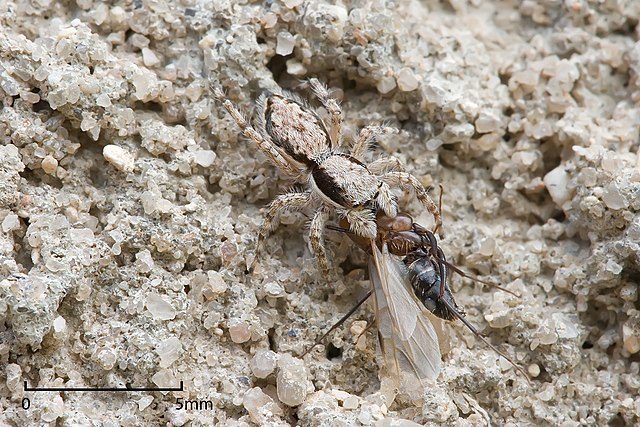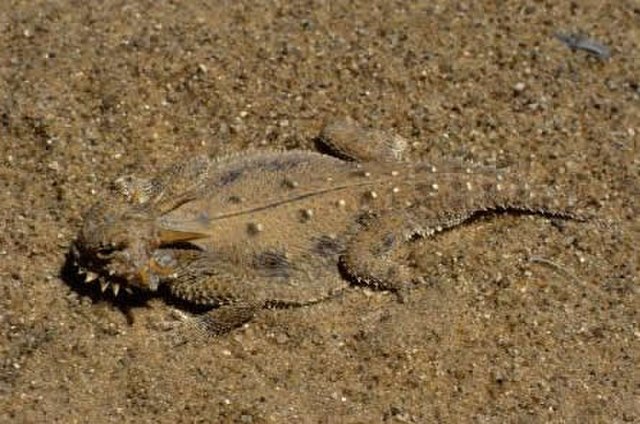In ecology, crypsis is the ability of an animal or a plant to avoid observation or detection by other animals. It may be a predation strategy or an antipredator adaptation. Methods include camouflage, nocturnality, subterranean lifestyle and mimicry. Crypsis can involve visual, olfactory or auditory concealment. When it is visual, the term cryptic coloration, effectively a synonym for animal camouflage, is sometimes used, but many different methods of camouflage are employed by animals or plants.
Hiding
Revealing itself
A Draco lizard showing camouflage methods including background matching, disruptive coloration, reduction of shadow, and cryptic behavior in Bandipur National Park
Camouflage allows animals like this disruptively-patterned spider to capture prey more easily.
Anti-predator adaptations are mechanisms developed through evolution that assist prey organisms in their constant struggle against predators. Throughout the animal kingdom, adaptations have evolved for every stage of this struggle, namely by avoiding detection, warding off attack, fighting back, or escaping when caught.
Anti-predator adaptation in action: the seal shark Dalatias licha (a–c) and the wreckfish Polyprion americanus (d–f) attempt to prey on hagfishes. First, the predators approach their potential prey. Predators bite or try to swallow the hagfishes, but the hagfishes have already projected jets of slime (arrows) into the predators' mouths. Choking, the predators release the hagfishes and gag in an attempt to remove slime from their mouths and gill chambers.
Fruit bats forage by night to avoid predators.
Camouflage illustrated by the flat-tail horned lizard, its flattened, fringed and disruptively patterned body eliminating shadow
Kallima inachus masquerading as a dead leaf








